August 1, 2019
A Dedication to the Food Sovereignty Movement
Story and photos by Darrah Good Voice Elk
Going back to the traditional ways is something today’s generations are taking an interest in, relearning techniques and protocol for identifying plants, berries, and roots. Restoring Shoshone Ancestral Food is one of the many ways the tribes of the Wind River Reservation are implementing decolonization strategies through food sovereignty knowledge. Darrah Good Voice Elk and WyomingPBS Producer Stefani Smith are piecing together a Farm to Fork episode, highlighting the hard work placed into the saving of cultural teachings. Food sovereignty promotes healthy living through food identification and implementation. Through research and interviews they have learned more on the term “food sovereignty,” and its big movement, not only here in Wyoming, but across all lands. This story is a pieced-together product of the interviews conducted with Shoshone Ancestral Food Gathers who are learning the importance of continued ways that have been put into place by the Shoshone ancestors. Here are those interviews:
Carmen Underwood
“I do the hoop dance just to make people feel good so they could get a spiritual gain. Just growing up, knowing that I had another form of prayer that many people don’t understand. They think it’s just for entertainment, but it’s a really old dance that was brought up from the south and it was a form of prayer.”
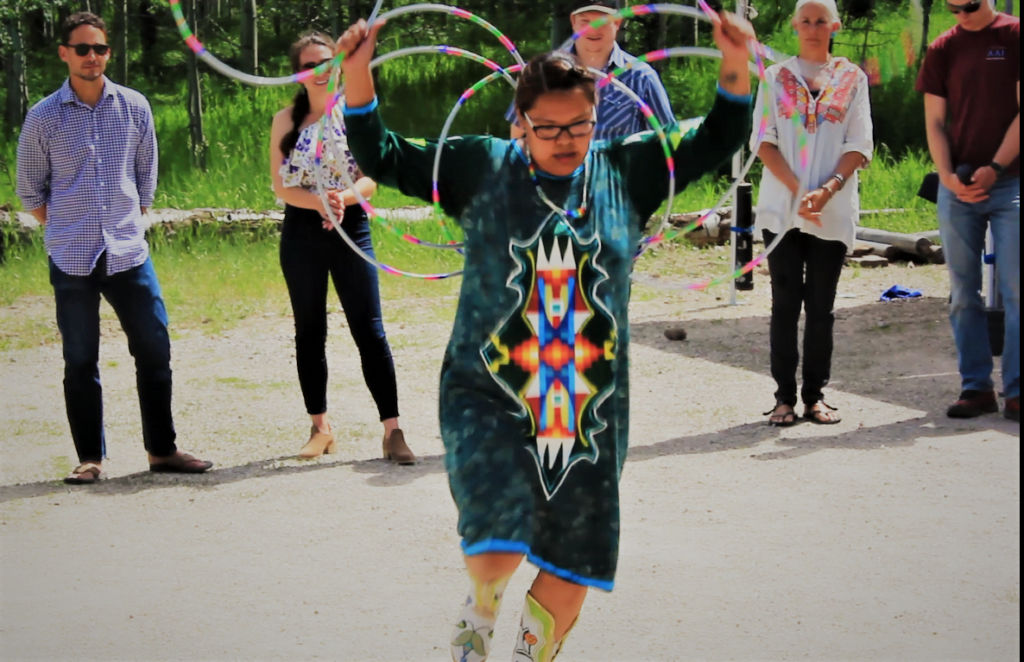
“I don’t see them, but my ancestors are watching me and guiding me along this. As a youth growing up on the reservation, it’s kind of hard. We have our own difficulties.
“When the white people first came over, we were told that we can’t act the way we are and now were given a chance to act the way we should have been. And it’s really hard because we lost so much knowledge and cultural connections.
“I grew up in a traditional home. I was raised by my great grandparents and they knew where all the plants and roots were, but they were physically unable to show me.”
Gabriel Sakata
“We’re in the middle of nowhere out here. If something goes wrong and we can’t get groceries at the store, it’s a useful thing to be able to come out here and just gather staples. The hawthorn berry tea, it’s supposed to help with certain types of cancer. The chokecherries have a lot of health benefits, kind of like regular cherries.”
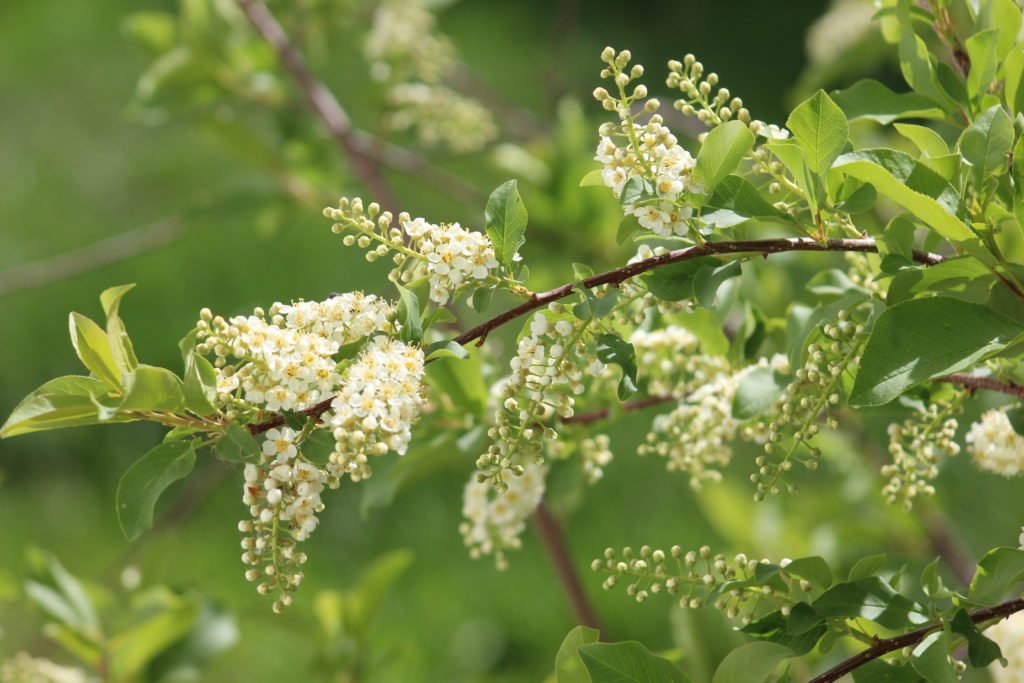
“We can get biscuit root, that way…we still have bread. It makes it to where we don’t have to go and buy certain things.
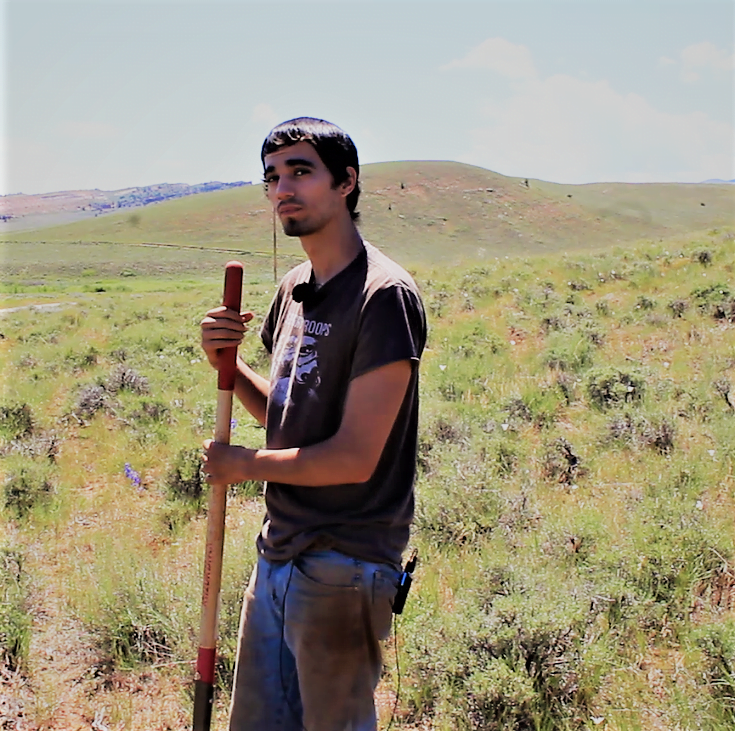
“The work is hard, it’s a lot like farm work, or like hardcore extreme gardening, but it’s rewarding too. And, if we can get more people to see that, then more people would want to come gather.
“It should be important for all of us.”
Vernie Panzetanga
“As far I can see commodity foods are getting less and less and food for your household is limited. The good thing about commodities are they have fresh fruit, fresh vegetables when they can get it.
“It’s hard on us. Right now the technology is actually taken over our children, they’re not interested in doing anything. They’d rather be at home on their games or their phone.
“Imagine back when our ancestors, they didn’t complain. I realize now what the older people went through to get food.
“I’m in the learning process of all this and it’s important for me to learn now so I can carry it onto my grandson. Being six years old, I think if he starts now, he will carry it on.”
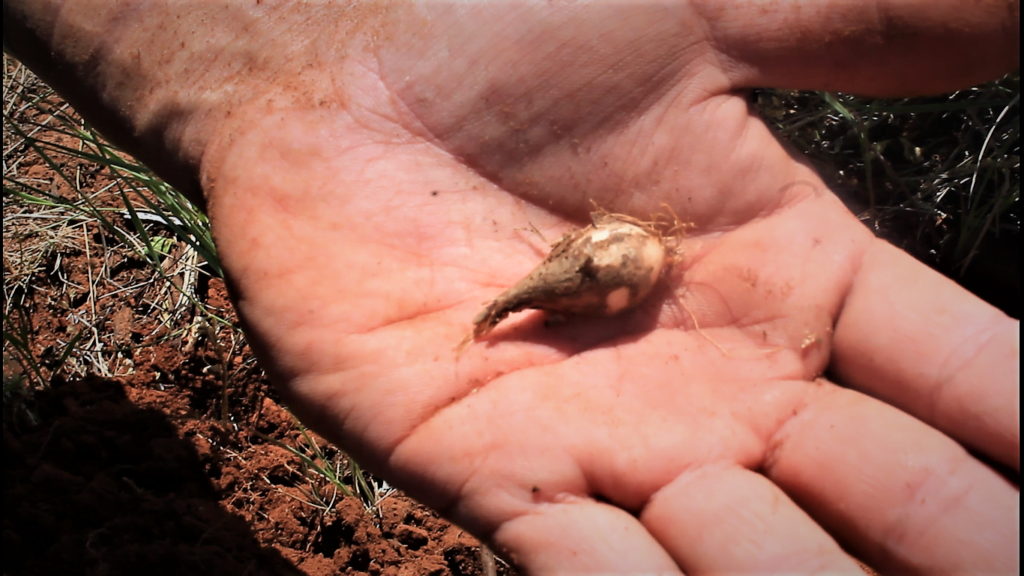
Sharon Wagon
“Right now, in the day and age, we don’t really think about what plants are edible.
“The fresh fruits and vegetables are good, because, long time ago, we planted that too, and we were a lot more, healthier because we were outdoors, picking fruits, picking vegetables, gardening.”
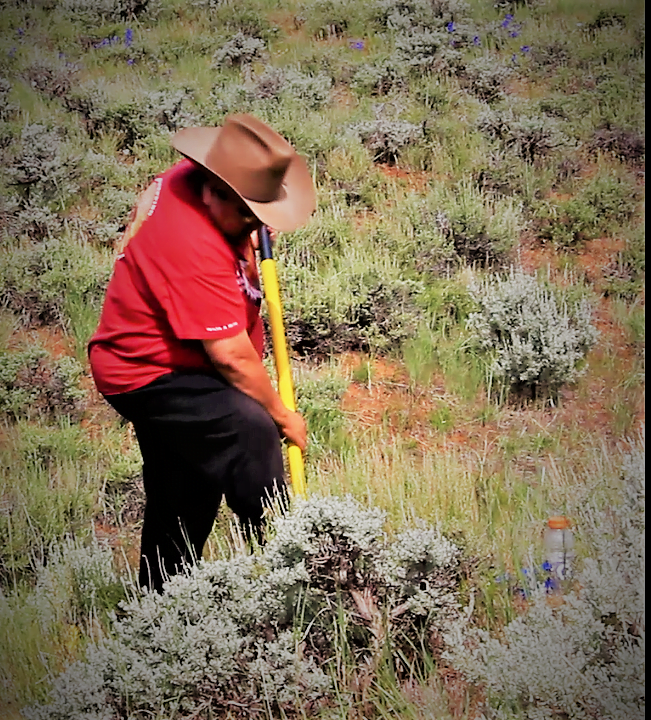
“A lot of the plants that are edible, you don’t think about them, but they are edible and they are pretty.
“Long time ago, they didn’t get major diseases, because of their eating habits and using a lot of the fresh growth through here.
“There’s a lot of plants that can be used instead of rushing to the doctor all the time, when you can actually use a lot of the medicines that we pick out here. So, it’s important and I’m still learning more things about it.”
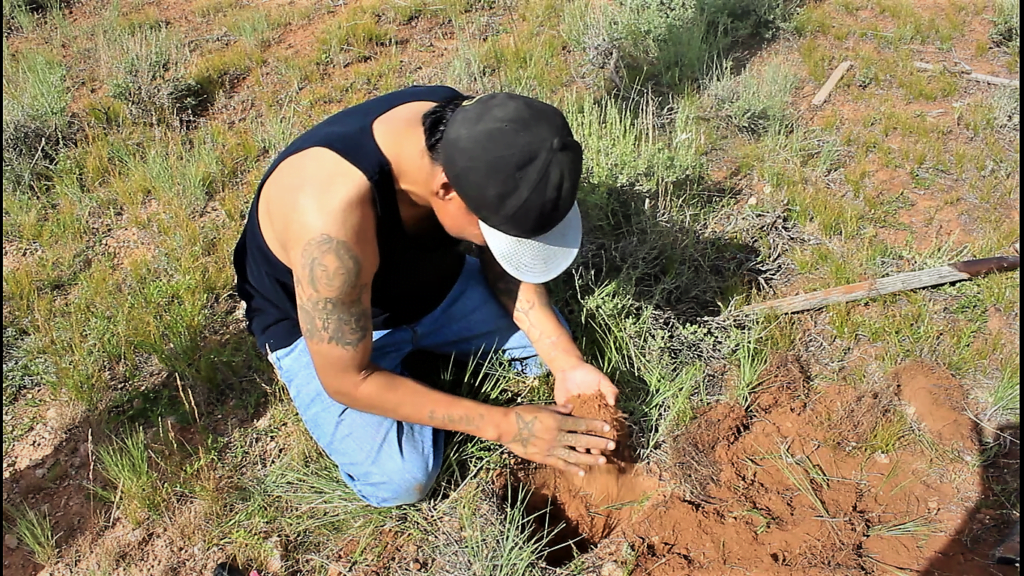
Caroline Mills
“For those of us that just like being outside, when you look around, you’ve got mountains to hike, you got rivers to fish. We understood that the foods are here, the medicines are here too. So now, people are realizing we had it right all along. They just wouldn’t believe us. Our people knew about the medicines, the foods and everything.”
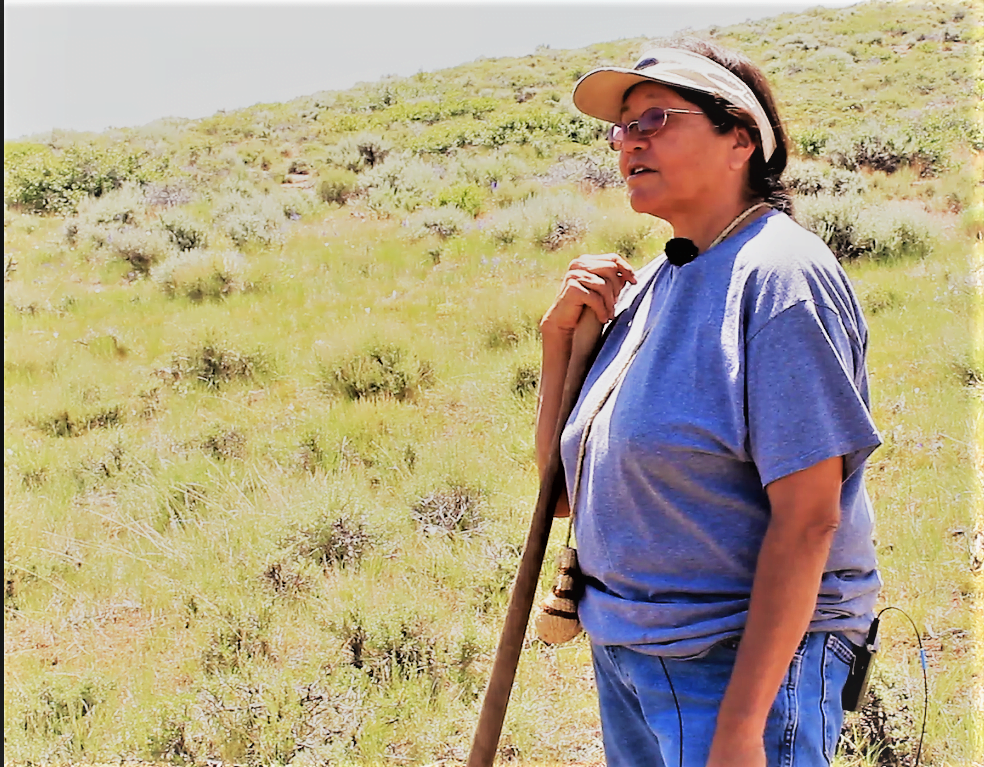
“I would have enjoyed tanning the hides. I don’t mind a little hard work. The men hunted and they fished for the food and the women did all the work. They did the cooking, the cleaning, and making of the clothes, the gathering of the food and processing the food.
“I should have been born in the 1800’s. You got to get out and do some hard work, so you’re not scared to work.”
Sokaiheechee Mills
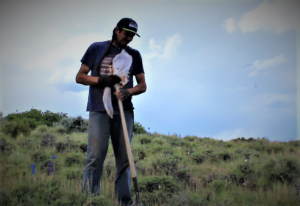
“I know it’s persistence and dedication, but something that makes a healthy living. Hard work’s hard to do nowadays and it’s hard to get kids off the TV and out here doing something good for the people.
“People my age are dying younger and younger. We could make good food and stuff that lasts for a long time.
“It’s really important to know our plants and healing that heals us. This is how us Indians used to eat and how we used to live.
“We’re so used to opening up pop. We don’t appreciate water and everything around us.”
Audrey Plenty Hoops
“Being in with nature has helped me tremendously. With taking that time to stay busy, do things that are productive, be with nature.
Obesity, heart disease, our people are dying from that. It’s a high percentage on our reservations of heart disease and people on dialysis, and it’s all due to eating habits.
“If we do this and we teach our people, we teach our children, you know, we take what we want and put the time toward it. You know, we got our foods right here in our land the Creator gave us.
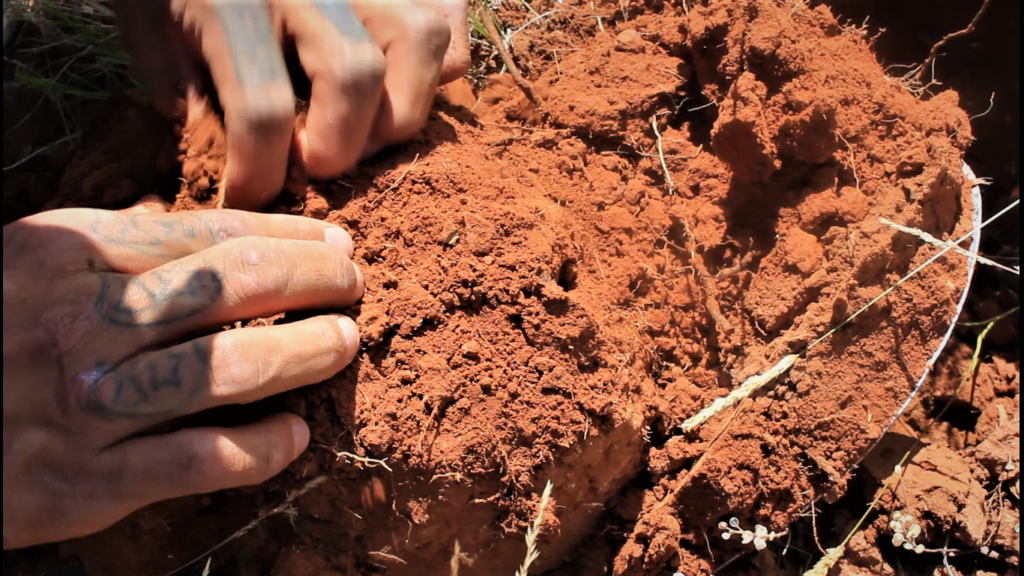
“We can learn how to live off of this land like our ancestors did. The seasons are very important to our people. Every time before we pick, we practice our spiritual belief, which is to say a prayer and to let the earth know that we’re here to visit and that we’re not going to pick more than what we’re supposed to.”
Looking forward
Audrey Plenty Hoops
“As American Indians, we learn orally better than we do, you know, by text. The technology change, in the era that we’re coming into, is so different. It takes it away. This is a really good therapy for me and my children.
“If we do this and we teach our people, we teach our children, you know, we take what we want and put the time toward it, it allows us to restore, restoration is a main thing.
“We need to bring respect back because our younger generations are losing that.”
Sharon Wagon
“It’s important that you try to teach your family members about your culture. Always remember your culture, even if it’s just simple things.
“The ancestors are always with us no matter where we go. It goes all the way back to from where they learned and then, you know, you always pass it on.”
Caroline Mills
“I think it’s really cool when you find out there’s food in your backyard and it’s free and it’s healthy. It’d be nice to pass the knowledge on to the younger people. We’re learning, so, we’re going to pass it on.”
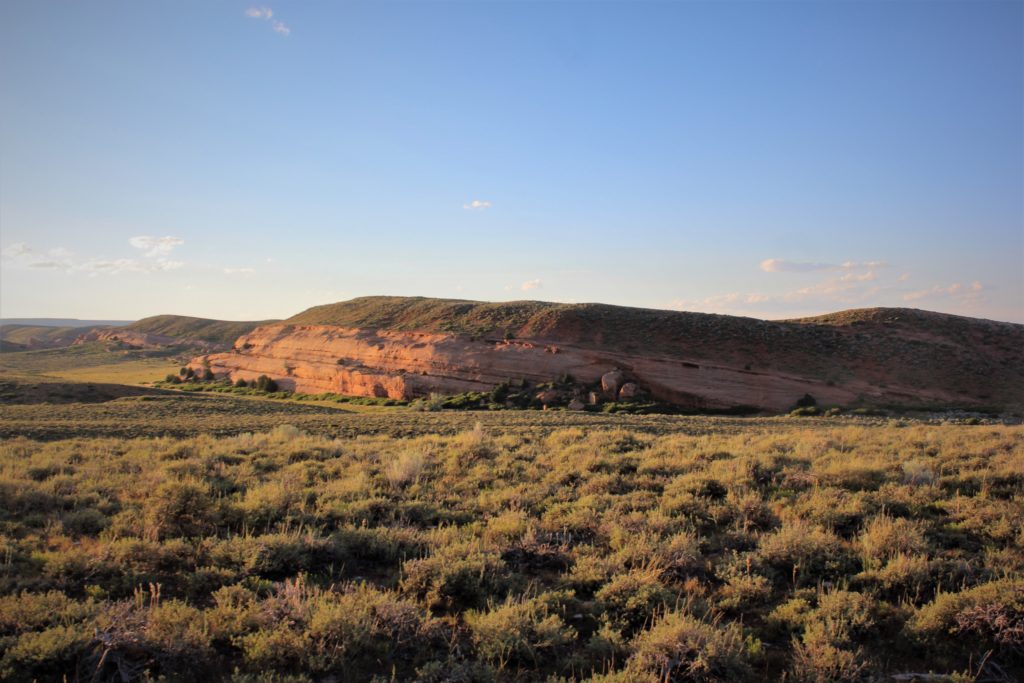
Since learning about the food sovereignty movement happening across all of Native Country, I, Darrah Good Voice Elk has had a strong interest in learning more about the two tribes that reside upon the Wind River Reservation and the history that binds them to this land. Among the many lessons learned through this interview process, I have learned about a policy change that allows many national parks to allow Native peoples access to utilize federal lands for medicinal and foraging practices.